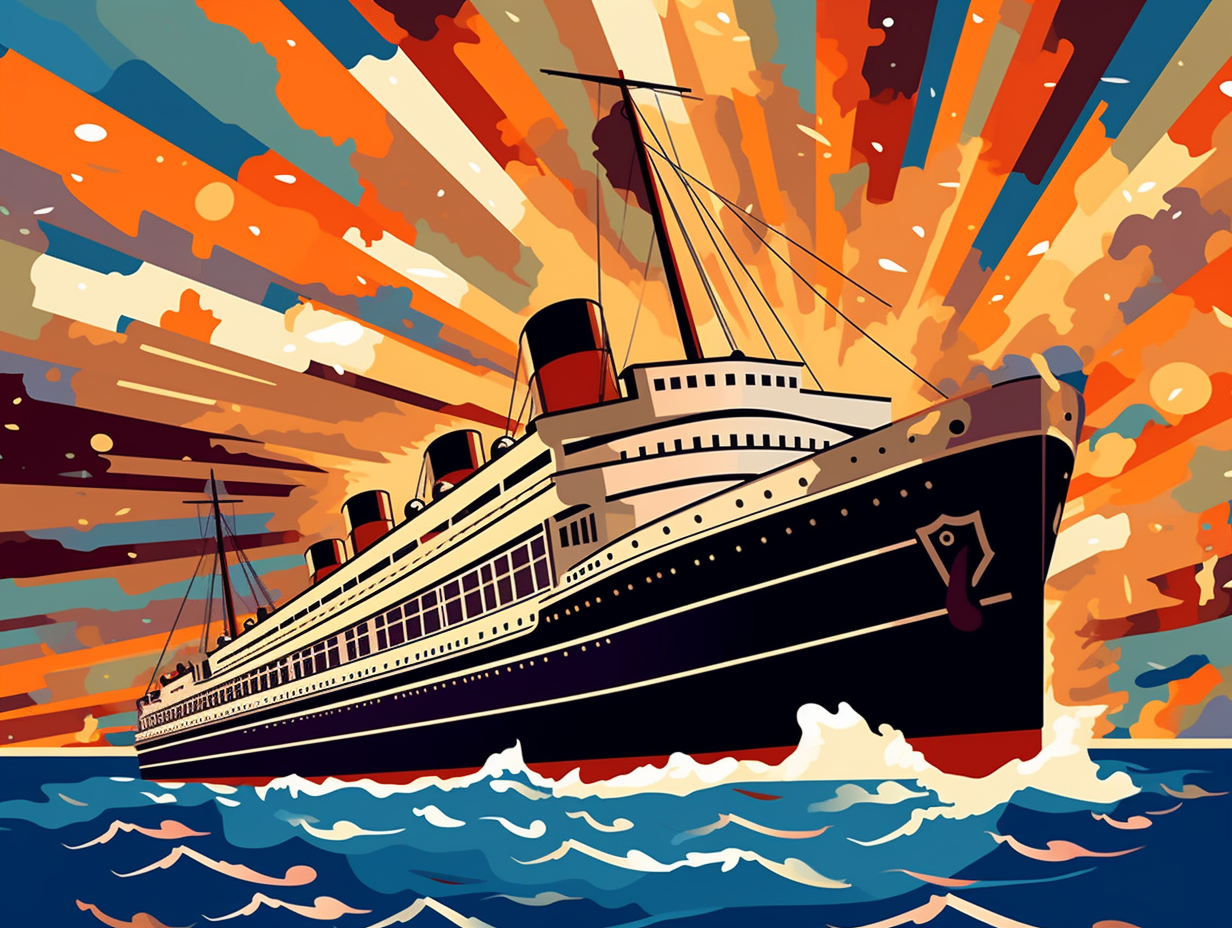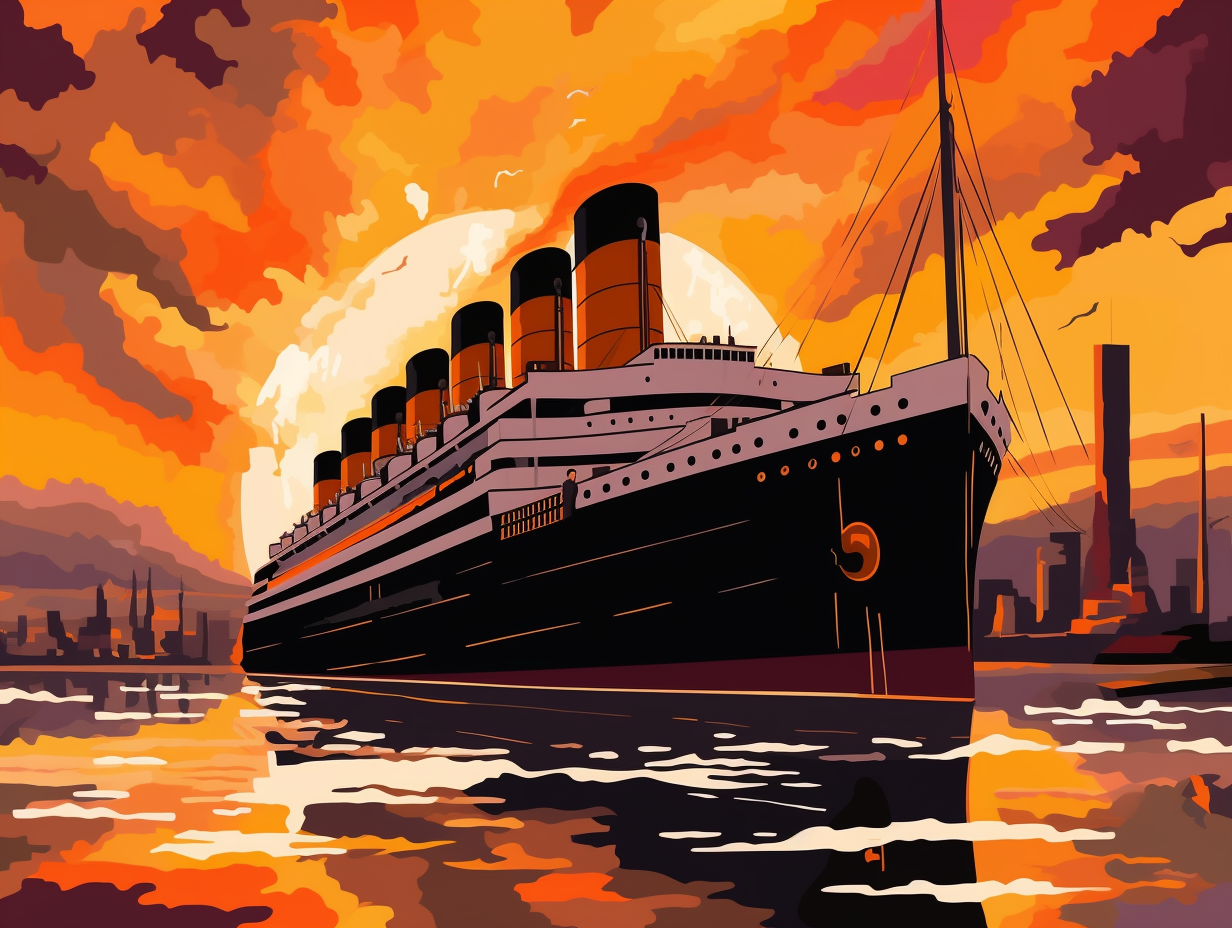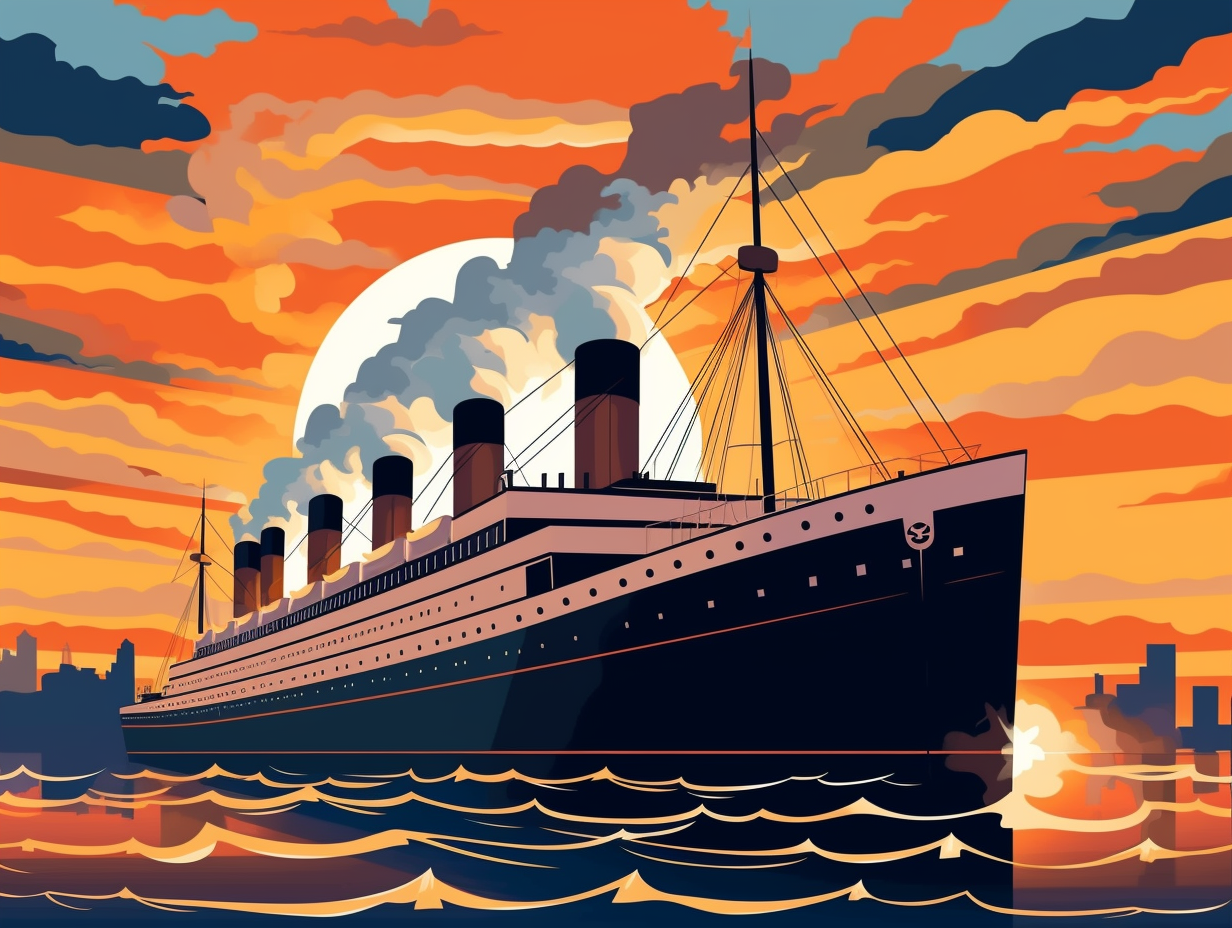Top 10 Astonishing Lusitania Fun Facts: Unveiling Secrets from the Ship's Ill-Fated Journey

1. Vanderbilt's Million-Dollar Sinking
Before boarding the Lusitania, Alfred Gwynne Vanderbilt probably thought, "All I need is a million dollars and a boat"—and, well, he had both! Alas, it wasn't as smooth sailing as he'd hoped: The sinking of the Lusitania on May 7, 1915, took the life of the millionaire and many other prominent Americans, provoking anti-German sentiments that pushed the US towards WWI, and marked the end of "gentlemanly" warfare, making way for a darker era of total war.
Source => loc.gov
2. Lusitania: A Cruise Ship in Disguise
Who said luxury and war don't mix? The RMS Lusitania was like a cruise ship that took a gap year to dabble in military service: this glamourous ocean liner not only wowed passengers with opulence but also flirted with the idea of joining the war efforts by being equipped with gun mounts – all dressed up with nowhere to shoot. No actual guns were ever added, though, but this design choice did cause some serious hull-abaloo when it tragically sunk during WWI, leaving everyone questioning if it was a fair target for the German U-boat that attacked it.
Source => en.wikipedia.org

Did you know the USS Yorktown went from Pearl Harbor to a game-changer at the Battle of Midway in just six months? Discover how this damaged ship made a legendary comeback!
=> Fun Facts about Pearl-Harbor
3. Ill-Fated Voyage with a Bang
The RMS Lusitania: an Atlantic cruise with a bang, quite literally! This ill-fated voyage had more than just life vests, shuffleboards, and jazz bands onboard: it was torpedoed by a German U-boat in 1915 with military ammunition – including Remington .303 rifle/machine-gun cartridges, shrapnel shells, and brass percussion artillery fuses – stashed in its cargo, sparking a fiery debate about its legitimacy as a military target that's still hotly contested today.
Source => en.wikipedia.org
4. Third-Wheeling on the Lusitania
Who says third-wheeling can't be fun? The Lusitania had its very own "economy class party bus": accommodating over 1,100 passengers, the third-class section may not have been as lavish as first-class, but it still offered an array of common areas like a dining room, smoking room, and promenade area to enjoy the voyage, albeit in a more modest fashion.
Source => en.wikipedia.org

5. Granny's Knitting Needles vs. Lusitania
Lusitania's explosive truth: a damp squib! Contrary to the tale woven by history's yarn, the RMS Lusitania, famously torpedoed in 1915, carried about as much firepower aboard as Granny's knitting needles: The German U-boat sunk the ship more for its strategic significance to Britain and its allies than for its meager payload of munitions.
Source => cbsnews.com
6. Cunard Line's Forgetful Anniversaries
While the Cunard Line's penchant for forgetting anniversaries isn't as catastrophic as doing so in a marriage, it's still a curious and amusing omission: The Lusitania's owner has not consistently sent floral tributes each year since the tragedy. However, they did rise to the occasion for the 100th anniversary in 2015, laying wreaths at the wreck site during a memorial service.
Source => en.wikipedia.org
7. Lifeboat Musical Chairs
Ahoy, sink or swim! In the grand game of maritime musical chairs, the Lusitania had all hands on deck with enough lifeboats to seat over 2,600 souls: a whopping 22 lifeboats for 68 people each, and 20 collapsible boats for 54 people each for your aquatic escapades. However, snagging a seat didn't always spell survival, as only six lifeboats from the starboard side took off without a hitch, while lifeboat 14 from the port side watery-logged and sank like a less-than-ideal party boat.
Source => rmslusitania.info
8. Fashion-Forward Liner Changes Foreign Policy
Ahoy, mateys! Bet you didn't know that a fancy pants ocean liner with a taste for fashion could set the course for an entire nation’s foreign policy. Anchors aweigh!: It was the sinking of the Lusitania, which ultimately tipped the scales for American sentiment and paved the way for the United States' entry into World War I, forever changing their international stance.
Source => pbs.org
9. Captain Crunch's Surprising Fate
Captain William Turner, the Lusitania's real-life Captain Crunch, foiled the world's expectations when he didn't find himself tangled in more torpedo treachery: In fact, after humbly avoiding further maritime mayhem, he traded his sailor's life for a landlubber's loafers, living peacefully until his demise in 1933 from intestinal cancer.
Source => rmslusitania.info

10. Dodging Bodies to Hop on Lifeboats
Talk about a sink or swim situation: During the Lusitania tragedy, one survivor, Elbert Hubbard, had to maneuver over floating bodies just to secure a spot on a lifeboat.
Source => loc.gov
Related Fun Facts




















